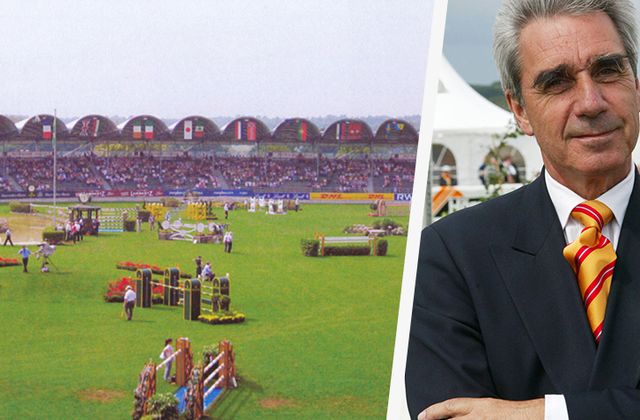Famous Showjumping Course Builder
Olaf Petersen

Olaf Petersen is a renowned and revolutionary Course Designer in show jumping, responsible for designing Olympic Games and World Equestrian Games courses, and now focuses on training International Course Builders.
A Luminary Among the Course Builders
Big jumps, exact lines and creative courses: Olaf Petersen is one of the most renowned and revolutionary Course Designers in the history of show jumping. A successful show jumper himself at International level, in 1974 the native-born German began with the creative and aesthetic job of Course Designing.
He is responsible for designing two Olympic Games show jumping courses: Seoul in 1988 and Athens in 2004. In addition to this, he designed the World Equestrian Games Course in 1990 in Stockholm, as well as designing the course or being the Technical Delegate for many European Championships and World Cup Finals, traveling worldwide.
In the years 1993 to 1997 he was Vice-Chairman of the FEI (Fédération Equestre Internationale), Chairman of the Jumping Committee of the German Olympic Riding Committee (DOKR) from 1997 to 2005. In 2005 Petersen retired from the sport as a course director. But there can be no question of retirement. Since then, he has been focusing on training International Course Builders.
One of his most successful students is his son Olaf Petersen jr. "We are the only family in which father and son have reached the highest level in course designing," says Petersen proudly.
The era of Olaf Petersen is far from over. "Picasso painted some of his most beautiful pictures at 85".
His Major Influence on Course Design in Show Jumping
Olaf Petersen had his own individual stamp that flowed through his Course Designing; the height and the width were not as telling as the challenging lines and distances he created. Not only was the horse’s jumping ability tested but the rideability and cooperation between horse and rider.
With that, he was considered as a revolutionist in the building of jumps and courses. His elegant style of course designing was a big step away from the massive jumps with heavy poles resting in deep cups that didn’t necessarily fall when touched.
Courses from
Olaf Petersen

